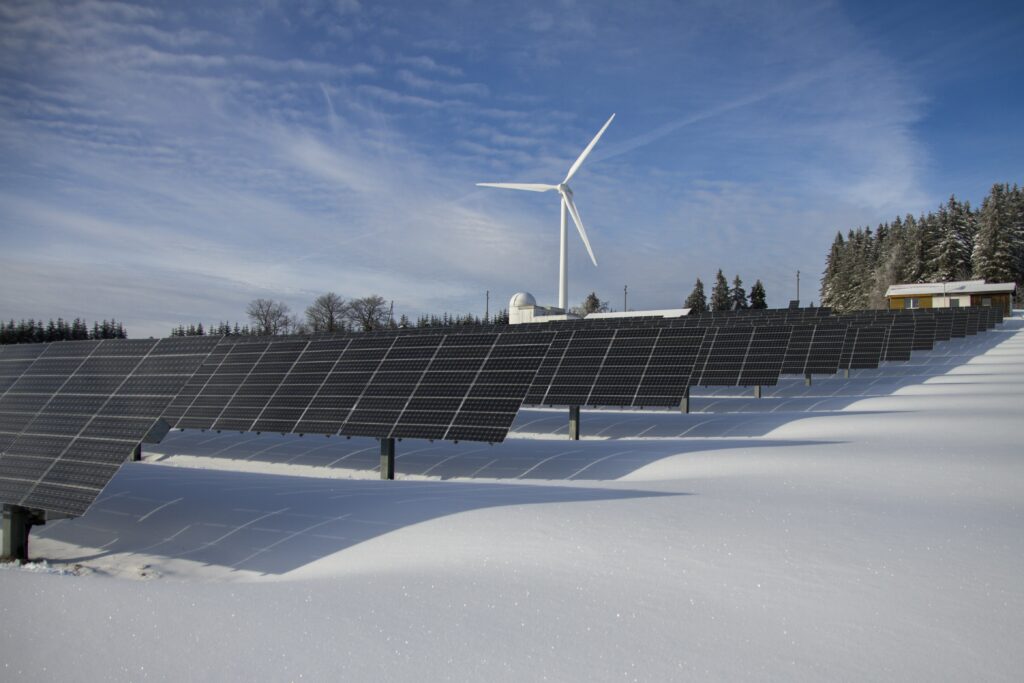Wind turbines and solar panels are an increasingly common sight. But why? What are the benefits of renewable energies—and how do they improve our health, environment, and economy?

Less global warming
Human activity is overloading our atmosphere with carbon dioxide and other global warming emissions. These gases act like a blanket, trapping heat. The result is a web of significant and harmful impacts, from stronger, more frequent storms, to drought, sea-level rise, and extinction.
In the United States, about 29 percent of global warming emissions come from our electricity sector. Most of those emissions come from fossil fuels like coal and natural gas.
Improved public health
The air and water pollution emitted by coal and natural gas plants are linked with breathing problems, neurological damage, heart attacks, cancer, premature death, and a host of other serious problems. Moreover, pollution affects everyone: one Harvard University study estimated the life cycle costs and public health effects of coal to be $74.6 billion every year. That’s equivalent to 4.36 cents per kilowatt-hour of electricity produced—about one-third of the average electricity rate for a typical US home [6].
Most of these negative health impacts come from air and water pollution that clean energy technologies simply don’t produce. Wind, solar, and hydroelectric systems generate electricity with no associated air pollution emissions. Geothermal and biomass systems emit some air pollutants, though total air emissions are generally much lower than coal- and natural gas-fired power plants.
In addition, wind and solar energy require essentially no water to operate and thus do not pollute water resources or strain supplies by competing with agriculture, drinking water, or other important water needs. In contrast, fossil fuels can significantly impact water resources: both coal mining and natural gas drilling can pollute sources of drinking water, and all thermal power plants, including those powered by coal, gas, and oil, withdraw and consume water for cooling.
Like coal- and natural gas-fired power plants, Biomass, and geothermal power plants may require water for cooling. In addition, hydroelectric power plants can disrupt river ecosystems both upstream and downstream from the dam. However, NREL’s 80-percent-by-2050 renewable energy study, which included Biomass and geothermal, found that total water consumption and withdrawal would decrease significantly in a future with high renewables.
Inexhaustible energy
Strong winds, sunny skies, great plant matter, heat from the earth, and fast-moving water can each provide a vast and constantly replenished supply of energy. Unfortunately, a relatively small fraction of US electricity currently comes from these sources, but that could change: studies have repeatedly shown that renewable energy can provide a significant share of future electricity needs, even after accounting for potential constraints.
A major government-sponsored study found that clean energy could contribute somewhere between three and 80 times its 2013 levels, depending on assumptions [8]. And the previously mentioned NREL study found that renewable energy could comfortably provide up to 80 percent of US electricity by 2050.
Jobs and other economic benefits
Compared with fossil fuel technologies, typically mechanized and capital intensive, the renewable energy industry is more labor-intensive. For example, solar panels need humans to install them; wind farms need technicians for maintenance.